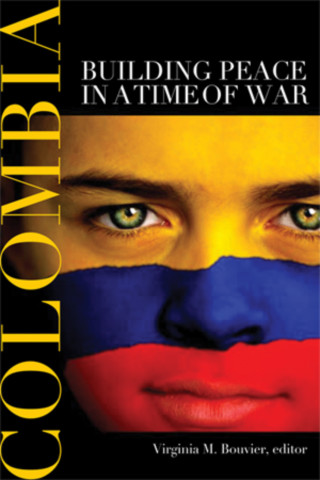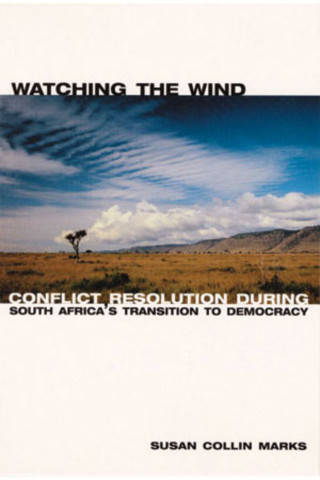Catalog
- Sort by
Gastrow describes the initiatives and events that led to the signing of the accord, exploring in particular the important roles played by religious groups and the business community.
A major work from a seminal figure in the field of conflict resolution, Building Peace is John Paul Lederach's definitive statement on peacebuilding. Marrying wisdom, insight, and passion, Lederach explains why we need to move beyond "traditional" diplomacy, which often emphasizes top-level leaders and short-term objectives, toward a holistic approach that stresses the multiplicity of peacemakers, long-term perspectives, and the need to create an infrastructure that empowers resources within a society and maximizes contributions from outside.
Sophisticated yet pragmatic, the volume explores the dynamics of contemporary conflict and presents an integrated framework for peacebuilding in which structure, process, resources, training, and evaluation are coordinated in an attempt to transform the conflict and effect reconciliation.
Building Peace is a substantive reworking and expansion of a work developed for the United Nations University in 1994. In addition, this volume includes a chapter by practitioner John Prendergast that applies Lederach's conceptual framework to ongoing conflicts in the Horn of Africa.
Bringing together the experiences and insights of more than thirty experienced and emerging authors, human rights activists, and peace practitioners from Colombia and abroad, Colombia: Building Peace in a Time of War documents and analyzes the vast array of peace initiatives that have emerged in Colombia in recent years.
Crescent and Dove looks at the relationship between contemporary Islam and peacemaking by tackling the diverse interpretations, concepts, and problems in the field of Islamic peacemaking. It addresses both theory and practice by delving into the intellectual heritage of Islam to discuss historical examples of addressing conflict in Islam and exploring the practical challenges of contemporary peacemaking in Arab countries, Turkey, Iran, Pakistan, and Indonesia.
In places as diverse as South Africa, Northern Ireland, and Nepal, negotiators of national peace plans have for years sanctioned the creation of local peace committees (LPCs) to address community-level sources of grievance and thereby to build peace from the bottom up. In A Crucial Link: Local Peace Committees and National Peacebuilding, longtime practitioner Andries Odendaal engages in the first comparative study of LPCs and asks whether and where the committees have succeeded.
Managing the Mediation Process offers an overview of the process of mediating interstate and intrastate conflicts. Each of its six chapters covers a different step in the process, identifying what needs to be done at that step and how best to accomplish it.
Managing Public Information in a Mediation Process, the second handbook in the Peacemaker's Toolkit series, helps mediators identify and develop the resources and strategies they need to reach these audiences. It highlights essential information tasks and functions, discusses key challenges and opportunities, and provides expert guidance on effective approaches. Examples from past mediations illustrate how various strategies have played out in practice.
Enlisting contributions by twenty-three community college professionals, Smith has created a first-of-its-kind volume for faculty and administrators seeking to develop innovative and engaging peacebuilding and conflict resolution programs. Through case studies, how-to's, sample syllabi and course materials, and inspiring anecdotes, contributors draw on learner-centered strategies, experiential learning, and interdisciplinary relationships to teach practical skills and strengthen global connections.
A compelling, inspiring account of peacemaking in action, Watching the Wind takes us to the front lines of South Africa's struggle to manage the tempestuous transition from apartheid to democracy.
When Mandela, de Klerk, and other political leaders launched the 1991 National Peace Accord in a far-reaching effort to staunch political bloodshed and promote consultation and cooperation between bitter adversaries, Susan Collin Marks was one of thousands of South Africans who committed themselves to making the peace process work where it mattered most—at the local level. Over the next three years, Marks and other leaders of the conflict resolution movement adopted and adapted a vast array of tools and techniques: they mediated, facilitated, and counseled; they created forums for open discussion and trained community leaders; they fostered community policing; and they anticipated crises and stood between demonstrators and security forces.
And, as Marks explains, “something extraordinary happened.” The international community had expected a bloodbath, but what it saw instead was a near-miraculous process of negotiation and accommodation. With passion and eloquence, the author captures the drama, the personalities, and the heroism of this grassroots peace process.
Women, Religion, and Peacebuilding: Illuminating the Unseen examines the obstacles and opportunities that women religious peace builders face as they navigate both the complex conflicts they are seeking to resolve and the power dynamics in the institutions they must deal with in order to accomplish their goals.










